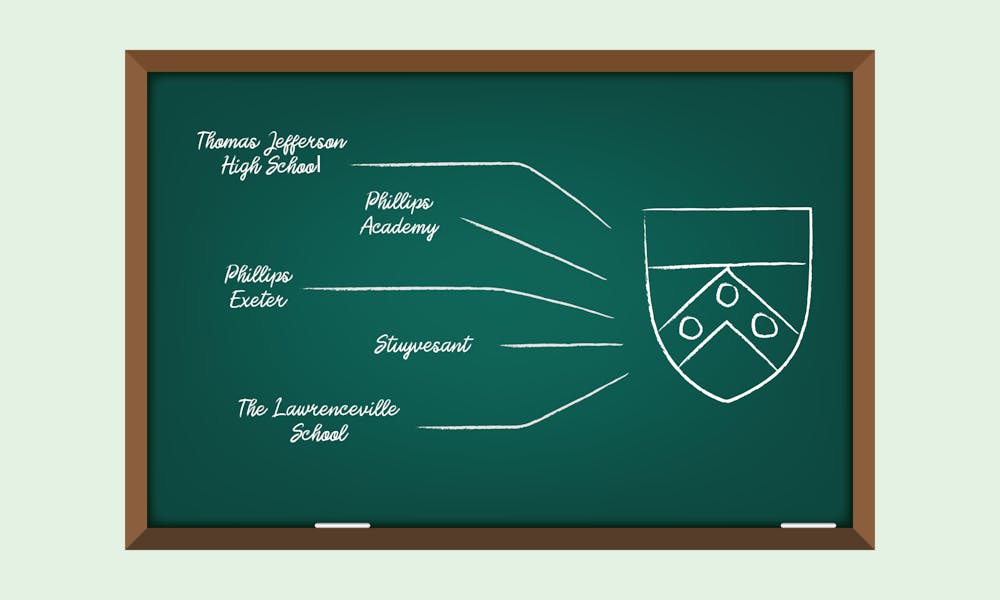
Recent social uprisings and calls for racial justice for the Black community are forcing Americans to reckon with the existence of systemic barriers to equity. As Penn students, we have special proximity to one such barrier, and one that we have undoubtedly benefited from — the higher education system.
Growing up, I assumed a fallacious truth: through hard work, anyone could gain admittance to a top college. But what does this illusion of meritocracy really mean when the American education system remains one of the most unequal in the industrialized world? And who are these institutions serving when our education system disproportionately restricts resources from low-income communities of color?
At Penn, many of my peers are not necessarily the nation’s brightest and most hardworking students, but rather the wealthiest and most privileged. Penn’s student body has more students from the top 1% of the income scale than from the entire bottom 60%. The presence of this wealth is exuded across campus life — from Penn’s social scene, to the network that many students have access to — permeating an elitist culture throughout the student body.
These numbers are no anomaly to Penn. According to a 2017 study by the National Bureau of Economic Research, students whose parents are in the top 1% of the income distribution are 77 times more likely to attend an Ivy League school than those whose parents are in the bottom income quintile. In addition, legacy admissions at these Ivy League schools strongly benefit wealthy and white alumni. Court documents in the recent Harvard lawsuit show that among white applicants accepted to Harvard, 21.5% had legacy status, while only 4.8% of accepted African American applicants were legacies.
The presence of such wealth in elite education is the product of historic discrimination in the public school system and restrictive admissions practices. Many of my wealthy peers had their fates sealed towards top universities long before they ever began college applications. Every year, an overflow of students arrive at Ivy League schools from the nation's same top private and public schools, where students are given access to countless educational advantages such as small class sizes, expansive course offerings, access to ACT/SAT prep tutors, and access to college counselors. It’s no surprise that 1 in 20 undergraduates at Princeton University came from just five high schools.
These top “feeder” schools into the Ivy League are often inaccessible to students who live in high-poverty and racially segregated school districts. Many specialized high schools are predominantly white and Asian, with low numbers of Black and Hispanic students granted admission. Stuyvesant High School is the top special entry public school in New York City and sends a number of students to elite universities like Penn every year. However, the school’s student body is only 1% Black and 3% Hispanic, most likely due to its highly criticized admissions test. Meanwhile, the New York City school system is nearly 70% Black and Hispanic.
Despite Brown v. Board of Education making racial segregation in public schools unconstitutional in 1954, schools in the U.S. are more segregated than ever. According to the Economic Policy Institute, Black students are five times as likely as white students to attend a racially segregated school, and twice as likely to attend high-poverty schools. In 2016, school districts that predominantly serve students of color received $23 billion less in funding than mostly white school districts in the U.S., even while serving the same number of students. This lasting racial and economic segregation, due to a long history of housing and loan discrimination against Black communities, has been heavily linked to the racial achievement gap.
The elite college system does little to alleviate this disparity. Very few students from these high-poverty high schools are able to access the resources to gain admittance to top schools. The Ivy League reinforces America’s racial and socioeconomic caste system by helping already wealthy students remain wealthy. And while these schools boast their students as the nation's most accomplished, public universities are actually accomplishing much more in terms of achieving equity. Middle tier public universities, such as the City University of New York and California State colleges, are the real American Dream, providing the highest rates of upward mobility for low-income students.
Still, equity cannot be achieved solely through reforming elite universities. As discussed, many of these structural barriers begin much earlier in a student’s life and at the district level. While we must continuously push schools like Penn to make changes to admissions practices, we must also reflect on how we act and engage within our own communities.
My very first opinion column discussed my belief that all Penn alumni should send their kids to public schools. While I still believe in this, we must go beyond blindly investing in public education without understanding the underlying local policies that have historically left many public school districts underfunded and segregated. Nikole Hannah-Jones, creator of the 1619 Project, touches on the complexities of these individual choices within a larger system with deep roots American history of racism.
In this fight for racial justice, we must especially challenge the institutions that we have benefitted from. Despite our backgrounds, we ultimately have privilege as Penn students. At the end of the day, the only way we can resist historically exclusive systems is by seeing every child’s future as valuable as our own. Now that we have benefitted from a Penn education, it is our obligation to make sure these opportunities are available to all children.

UROOBA ABID is a rising College senior from Long Island, N.Y. studying International Relations. Her email address is uabid@sas.upenn.edu.
Have opinions of your own you would like to share? Submit a guest column.
The Daily Pennsylvanian is an independent, student-run newspaper. Please consider making a donation to support the coverage that shapes the University. Your generosity ensures a future of strong journalism at Penn.
Donate







